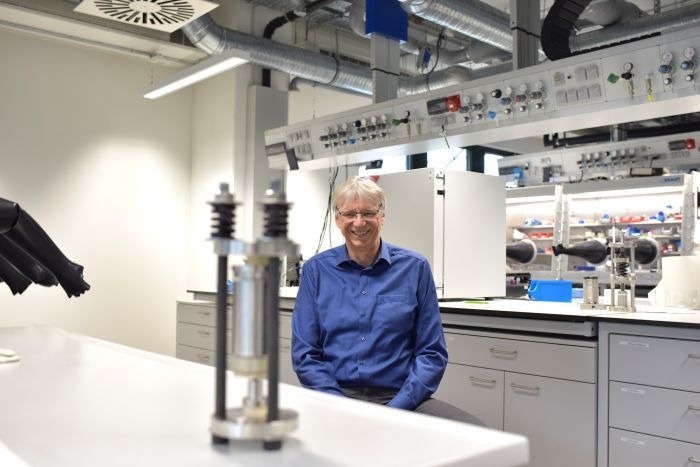Solid-state batteries are considered a key technology for the future: they can store more energy and do not rely on flammable materials like current lithium-ion batteries. Researchers at TUM and TUMint.Energy Research have now taken a significant step towards improving solid-state batteries. They developed a new material made of lithium, antimony and scandium that conducts lithium ions more than 30% faster than any previously known material.
 Prof. Thomas F. Fässler in his laboratory at the Chair of Inorganic Chemistry with a focus on New Materials. Image Credit: Robert Reich / TUM
Prof. Thomas F. Fässler in his laboratory at the Chair of Inorganic Chemistry with a focus on New Materials. Image Credit: Robert Reich / TUM
The team led by Prof. Thomas F. Fässler from the Chair of Inorganic Chemistry with a Focus on Novel Materials partially replaced lithium in a lithium antimonide compound with the metal scandium. This creates specific gaps, so-called vacancies, in the crystal lattice of the conductor material. These gaps help the lithium ions to move more easily and faster, resulting in a new world record for ion conductivity.
Since the measured conductivity far exceeded that of existing materials, the team collaborated with the Chair of Technical Electrochemistry under Prof. Hubert Gasteiger at TUM to confirm the result. Co-author Tobias Kutsch who conducted the validation tests, commented: “Because the material also conducts electricity, it presented a special challenge, and we had to adapt our measurement methods accordingly.”
Fässler sees great potential for the new material: "Our result currently represents a significant advance in basic research. By incorporating small amounts of scandium, we have uncovered a new principle that could prove to be a blueprint for other elemental combinations. While many tests are still needed before the material can be used in battery cells, we are optimistic. Materials that conduct both ions and electrons are particularly well suited as additives in electrodes. Because of the promising practical applications, we’ve already filed a patent for our development." In addition to its faster conductivity, the material also offers thermal stability and can be produced using well-established chemical methods.
The researchers have even discovered an entirely new class of substances through their work, as first author Jingwen Jiang, scientist at TUMint.Energy Research, emphasizes: "Our combination consists of lithium-antimony, but the same concept can easily be applied to lithium-phosphorus systems. While the previous record holder relied on lithium-sulphur and required five additional elements for optimization, we only need only Scandium as an additional component. We believe that our discovery could have broader implications for enhancing conductivity in a wide range of other materials."